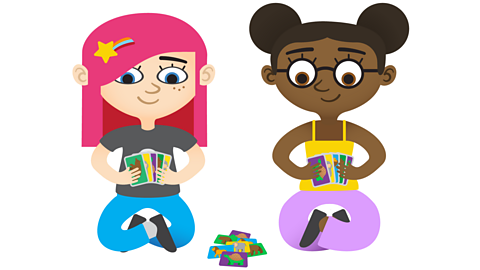Logical reasoning explained

logical reasoningUsing agreed rules to think about information and solve problems. is a way of thinking that uses rules. It helps us:
solve problems
give instructions to make something happen
explain why things happen
predict what might happen next
Being logical means thinking sensibly about something using rules that everyone agrees with.

Different types of rules

We use rules in different areas of learning and in our everyday lives. Rules are often instructions that tell us what to do. They can also be statements that explain or predict how something will behave.
Sometimes we are taught the rules. grammatical rulesRules to follow when we speak or write a language like English. help us when we learn about languages, including English. mathematical rules Rules to follow when we are working with numbers and shapes in Maths. show us how to work with numbers and shapes in Maths.

Sometimes we can work rules out for ourselves by looking at the world around us and seeing what happens.
- We notice that when we drop a pencil it falls to the ground.
- We work out what button to press on the TV remote control to watch our favourite program.
When we know the rules for a particular situation, we can use them to help us with logical reasoning.

Using logical reasoning to explain how to play a game
Jo and Amina are playing a card game called Snap. Amina has never played Snap and doesn’t know what to do. She asks Jo questions about the rules of the game.

- Who puts their card down first?
- Do we take turns to shout SNAP!?
- How do we know who wins?

Jo thinks about Amina’s questions. She needs to think logically about the rules of the game and what order they go in.
Jo carefully explains the rules to Amina step-by-step.
- Start with our stack of cards face down, so we can't see the pictures.
- We take it in turns to turn our top card over and place it on the pile in the middle.
- If the picture on your card matches the card in the middle, it's a race to see who can shout SNAP! first.
- The winner keeps the pile of cards.
- We play until one of us runs out of cards.

Amina listens carefully to the rules Jo is explaining. Hearing them step-by-step makes everything easy to understand.
She can use logical reasoning to think about the rules and work out how to play the game.
And guess what? She wins!
Using logical reasoning to solve a problem

In Computing, we create lists of instructions, or algorithms, to solve a problem or complete a task.
The instructions act like rules. They describe what should happen, step-by-step.
We can use logical reasoning to help plan and organise the instructions to make sure they are accurate and in the right order.
We are making a computer game with balloons.
We have decided that when a player clicks on different coloured balloons they will score points. The number of points will depend on the colour of the balloon.
We can use logical reasoning to work out what the instructions would look like for our game. We can then create a list of rules or algorithm.


- When the player clicks on a yellow balloon, they will score ten points.

- When the player clicks on a pink balloon, they will score five points.
Writing a logical computer program
Now we need to turn the algorithms into a computer programA sequence of instructions written in a coding language that a computer can understand. using a coding language.
This coding language uses different blocks for each type of instruction.
We can use logical reasoning again, to work out which blocks to use in our program.
Do you think that we have chosen the right blocks?

Activity: Logical reasoning quiz
Computing - Dance Mat Typing. gameComputing - Dance Mat Typing
Build and test your computing skills with different levels of touch type challenges

More on Computing science
Find out more by working through a topic
- count9 of 11

- count10 of 11

- count11 of 11

- count1 of 11
